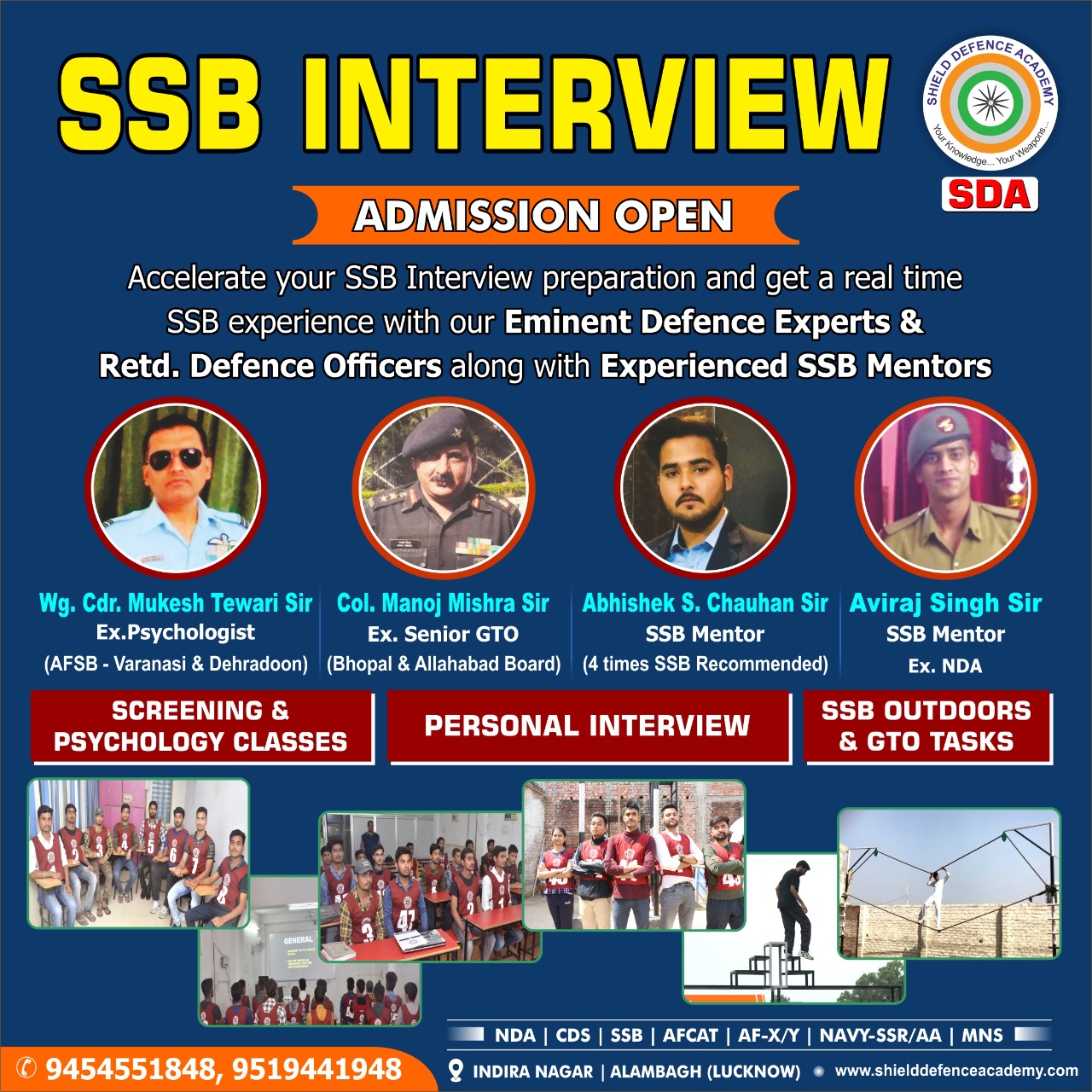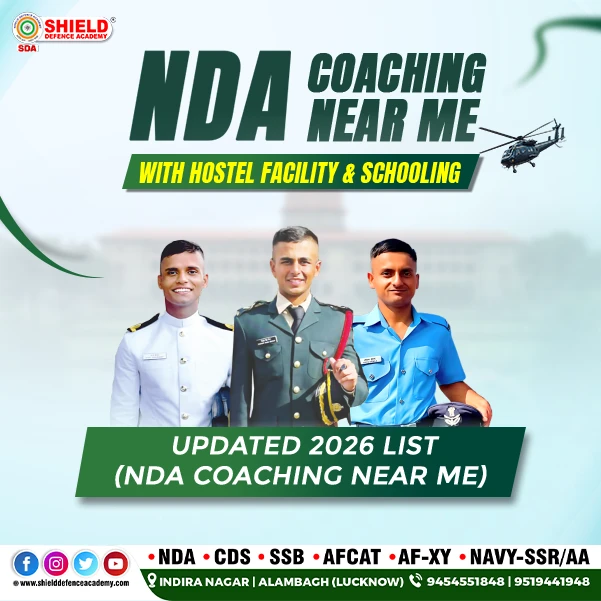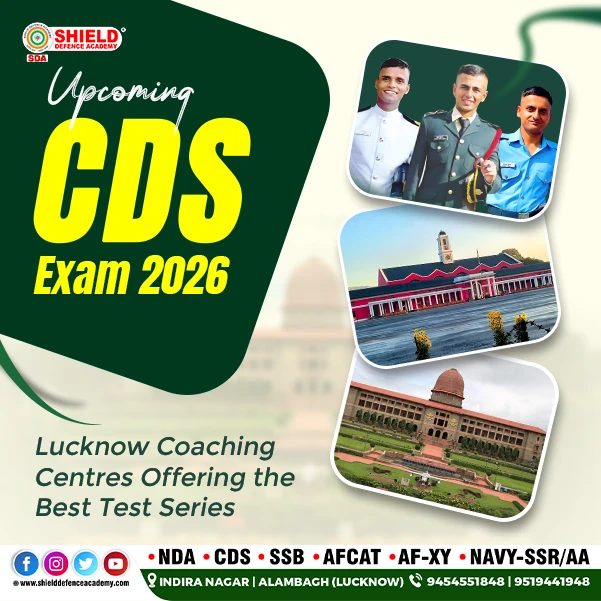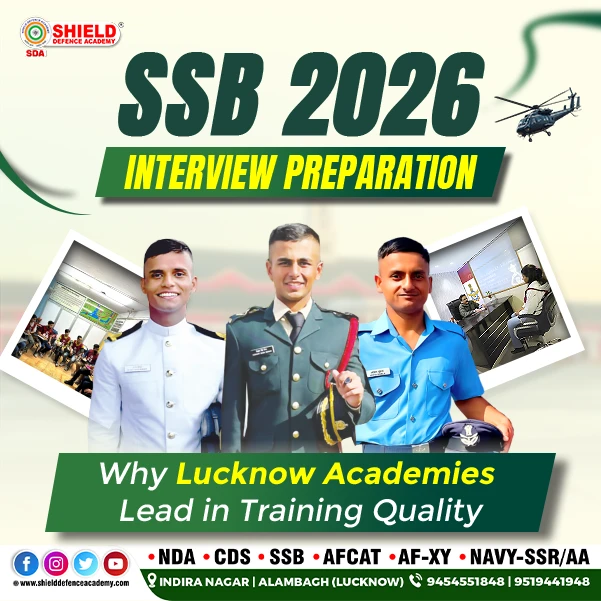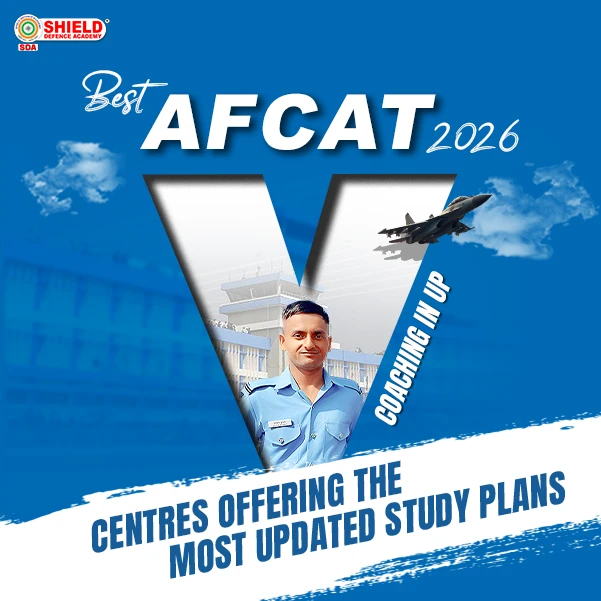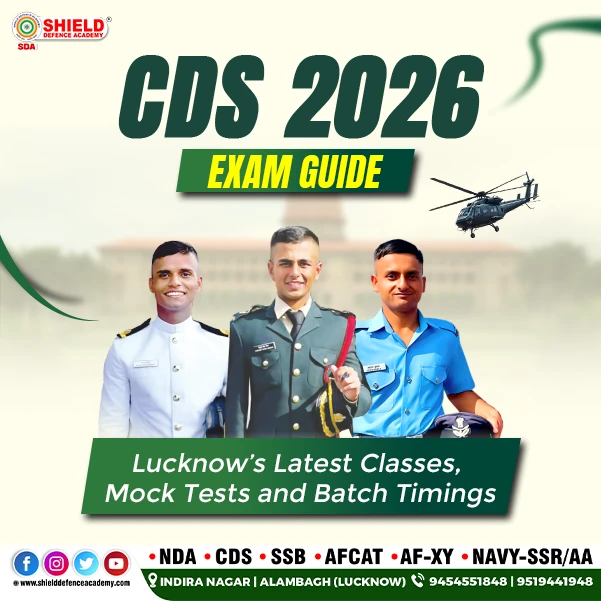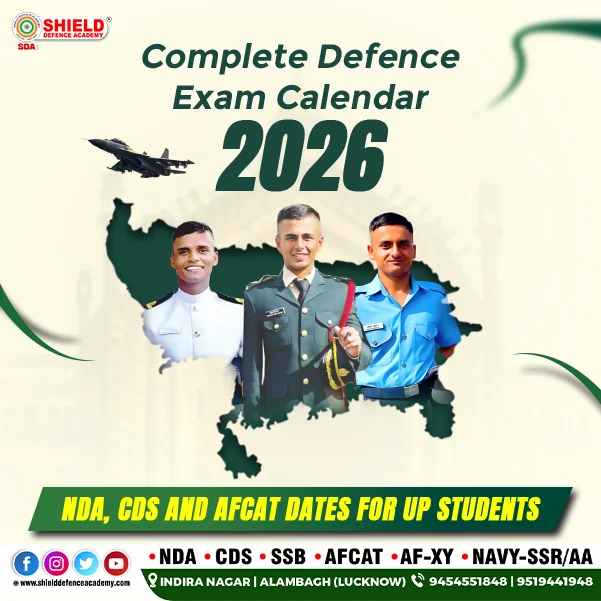The SSB Screening Test at the Service Selection Board (SSB) marks the first phase of the rigorous evaluation process for candidates. It is designed to identify individuals who possess the potential to move forward to the subsequent stages of testing. This test plays a pivotal role in determining the candidates’ suitability and is instrumental in shortlisting those who will continue their journey at the centre.
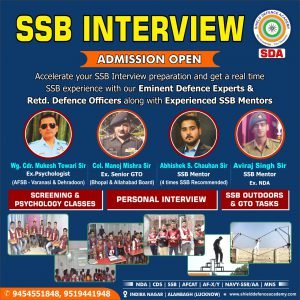
Shield Defence Academy ensures that its aspirants are meticulously prepared for the SSB interview process. With a dedicated approach, the academy instills in candidates the requisite skills and knowledge essential for excelling in the rigorous evaluation. Through comprehensive guidance and strategic training by Ex Armed Force Officers from SSB Interview board, aspirants are equipped with the acumen and readiness vital for navigating the multifaceted components of the SSB interview. Shield Defence Academy’s proactive and holistic approach from day one underscores its commitment to cultivating well-prepared and capable individuals poised to thrive in the SSB interview process and embark on successful careers in the armed forces.
Procedure of SSB screening test & Interview:
The SSB interview comprises two stages: Stage-1 and Stage-2.
Stage-1 involves the (a) Officer Intelligence Rating (OIR) Test,
(b) Picture Perception and Description Test (PPDT).
Stage-2 encompasses (a) Psychological Tests,
(b) Group Testing Officer (GTO) Tasks, and
(c) Personal Interview.
The interview culminates with a Conference on the last day. These comprehensive stages assess a candidate’s psychological, physical, and leadership attributes to determine their suitability for a career in the armed forces.
Understanding the SSB Screening Test:
The SSB Screening Test serves as an elimination round, emphasizing the need for candidates to approach it with focus and determination. It is conducted on the first day of reporting, with some candidates facing it on the second day, depending on their reporting time. The test is known to pose challenges even for recommended candidates; however, with a strategic approach, aspirants can navigate through it successfully.
Day 1: Screening Test
The SSB screening test process aims to identify potential candidates from the pool of reported individuals for a specific entry. It involves a series of activities designed to assess the candidates’ aptitude and suitability. These activities may include Officers Intelligence Tests (OIR), Picture Perception and Discussion Test (PPDT), to evaluate various aspects of the candidates’ potential. The screening process serves as the initial stage to identify individuals with the capabilities and attributes essential for successful progression in the SSB interview evaluation.
(i) Officer Intelligence Rating (OIR):
The OIR Test, or officers’ intelligence rating test, encompasses Verbal and Non-verbal assessments. While the OIR Test is a fundamental aptitude evaluation, thorough preparation is essential. Following the test, there is a brief break before transitioning to the PPDT.
(ii) Picture Perception and Discussion test (PPDT):
The Picture Perception and Discussion Test (PPDT) involves story writing and group discussion. After viewing a picture for 30 seconds, candidates have 3 minutes to craft a story inspired by the image. Subsequently, in groups of 14-15, each candidate narrates their story within 1 minute, followed by a collaborative discussion on the picture. This crucial assessment is pivotal for clearing the screening process and advancing to stage-2 testing.
If you are preparing for the OIR Test and PPDT, you can access the best OIR Classes at Shield Defence Academy. The academy offers regular classes by expert guidance of Ex Armed Force Officers from SSB Interview Board focusing on the OIR and PP&DT, also known as the Officers’ Intelligence Rating and Picture Perception and Discussion Test, which encompasses both Verbal and Non-verbal Test components. While the OIR Test is a fundamental aptitude assessment, thorough preparation is advantageous. At Shield Defence Academy, aspirants receive comprehensive training to excel in these areas, ensuring they are well-prepared for both the tests.
Understanding the Verbal and Non-Verbal Sections of the Officer Intelligence Rating Test: –
The Officer Intelligence Rating (OIR) test is an important assessment tool used to evaluate the intelligence and cognitive abilities of potential officers. One crucial aspect of the OIR test is the verbal and non-verbal sections, which are designed to gauge a candidate’s ability to reason, solve problems, and think critically. In this blog post, we will explore the specific topics covered in both the verbal and non-verbal sections of the OIR test.
a) Verbal Section:
1. Relationship: This section assesses the candidate’s ability to recognize and understand various types of relationships between words or concepts. It often includes questions that require identifying analogies, classifications, and associations between different elements.
2. Jumbled Words: This part of the test evaluates the candidate’s skill in rearranging jumbled words to form meaningful sentences or phrases. It tests their understanding of language structure and grammar.
3. Coding/Decoding: This topic challenges the candidate’s ability to decipher codes or patterns within a given set of letters, symbols, or numbers. It requires logical reasoning and pattern recognition.
4. Multiple Choice Questions: Candidates are presented with a set of questions and multiple options, from which they must select the correct answer. This section assesses their ability to analyze information and make informed choices.
5. Antonym and Synonym: This part of the test evaluates the candidate’s vocabulary and understanding of words by requiring them to identify either the opposite (antonym) or the similar (synonym) meaning of a given word.
6. Reconstruction of Sentence: Candidates are required to reconstruct jumbled sentences into coherent and grammatically correct structures. This assesses their comprehension of language and ability to organize information logically.
7. One Word Substitution: This section tests the candidate’s ability to express a complex idea or concept in a single word, thereby assessing their vocabulary and linguistic skills.
8. Odd One Out: Candidates are presented with a set of words, and they must identify the word that does not belong with the others based on a specific criterion. This assesses their ability to recognize patterns and differences.
9. Common Sense and Alphabet Test: This section may include questions that test the candidate’s logical reasoning, general knowledge, and ability to apply common sense in problem-solving. The alphabet test assesses their ability to identify patterns and sequences within the alphabet.
10. Arithmetic Questions: Candidates are presented with mathematical questions that test their ability to perform basic arithmetic operations, solve numerical problems, and interpret numerical data.
b) Non-Verbal Section:
1. Which Figure is Different from the Others: This section presents a set of visual figures or shapes, and candidates are required to identify the figure that does not belong to the given group based on certain characteristics or attributes.
2. Completion of Series: Candidates are presented with a sequence of visual figures or patterns, and they must identify the next figure in the series based on the underlying pattern or rule.
3. Locate the Concealed Figure: This part of the test assesses the candidate’s ability to identify a specific figure hidden within a complex arrangement of other shapes or patterns. It requires attention to detail and spatial reasoning.
4. Fill in the Correct Figure: Candidates are presented with a series of figures or patterns with one missing element, and they must select the correct figure to complete the sequence based on the given pattern or rule.
Key Strategies for Success:
1. Understanding the Purpose: Recognize that the Screening Test is designed to assess your qualities and attributes that align with the expectations of the armed forces. Focus on projecting your true self, emphasizing leadership, decision-making, and problem-solving abilities.
2. Mental Preparation: Approach the test with a composed and resilient mind-set. Stay confident, and maintain a positive attitude throughout the evaluation process. Remind yourself that this is a significant step towards achieving your goal.
3. Attention to Detail: Pay close attention to the instructions provided before the test. Ensure that you understand the rules and regulations thoroughly. Adhering to the guidelines showcases your ability to follow instructions, a quality highly valued in military personnel.
4. Chest Numbers as Identity: Embrace the practice of referring to individuals by their assigned Chest Numbers. This fosters a sense of equality and discipline among candidates, illustrating your adaptability and respect for protocols.
5. Preparation and Practice: Prioritize your physical fitness and mental alertness. Engage in group discussions, practice verbal and non-verbal reasoning, and cultivate clarity in expressing your thoughts. Strengthen your general awareness and current affairs knowledge to enhance your performance during the test.
6. Time Management: Develop effective time management skills to complete the test within the specified duration. Emphasize accuracy while efficiently addressing the tasks at hand.
7. Composure under Pressure: Expect the test to present challenges that assess your composure and ability to make rational decisions amidst pressure. Stay composed, stay focused, and approach each task methodically.
Conclusion:
The Screening Test at the SSB is a significant milestone in your journey towards being selected for the armed forces. By understanding the purpose of the test, mental preparation, adherence to instructions, practice, and effective time management, you can enhance your prospects of success. Embrace the ethos of discipline and equality represented by the Chest Numbers, and approach the test with determination, knowing that it is a stepping stone towards achieving your aspirations. With strategic preparation and a resilient attitude, you can navigate through the Screening Test and set the stage for a successful continuation of the evaluation process at the SSB.
Hope you found this Blog on Screening of SSB Interview, Tips and Strategies informative and helpful. Please contact us in case of any kind of confusion and doubt, Shield Defence Academy is available 24/7 for the Defence Aspirants of Our Country.
The Command Task in SSB GTO is an instrumental stage in assessing candidates’ communication skills, articulation, and overall demeanor while speaking. By approaching this phase with strategic preparation, a well-structured presentation, and an impactful delivery, candidates can effectively showcase their leadership potential and communication capabilities. Shield Defence Academy offers Test Series, Mock tests, Free Study Material, and Previous year’s question papers for various exams. Our expert guidance is provided by retired armed forces officers from the SSB interview board. Prepare for success with our comprehensive resources and the insights of experienced professionals. Join Shield Defence Academy for the ultimate preparation experience.
